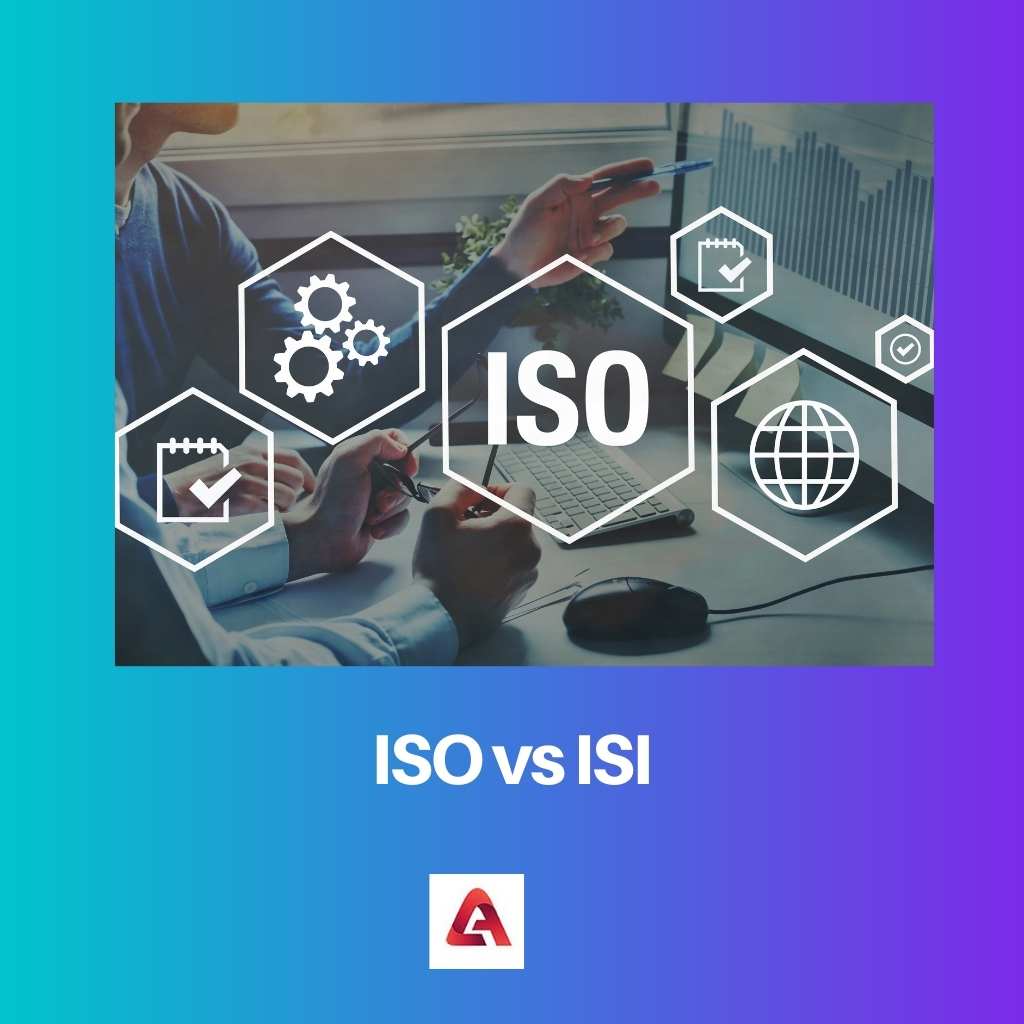Credibility can be added by demonstrating that your product or service meets the expectations of your customers through certification.
Ever thought about what does ISO or ISI (Indian) marks on the product you just bought signify?
Well if not then below you’ll see how ISO and ISI differ but firstly, an ISO Certification implies a high level of product quality and reliability of that product along with health safety,
and several other positive attributes for customers, clients, and common users.
Key Takeaways
- ISO (International Organization for Standardization) is a global body that develops and publishes international standards, while ISI (Indian Standards Institute) is a national standards organization in India.
- ISO standards cover many industries and topics, while ISI focuses on standards relevant to the Indian market and regulatory requirements.
- ISO and ISI aim to ensure product and service quality, safety, and efficiency by establishing guidelines and best practices.
ISO vs ISI
ISO is an international standard-setting body that publishes standards for various industries, including quality management systems, environmental management systems, etc. ISI is a national standard-setting body in India that sets standards for various products and services.

As previously mentioned, ISO stands for International Organization for Standardization. As a result of this organization’s work, businesses or organizations can receive certification.
These certifications are handled by an independent third-party each year regularly. This regular check of certifications ensures the quality of that product.
The term ISI stands for the Indian Standard Institute. A product with an ISI mark is guaranteed to comply with Indian standards which are mentioned in the guidelines laid by the ISI.
The ISI mark is also required for some electrical products, including wires, appliances, motors, etc. that are sold on the market. These ISI marks signify that the wires that are being sold are completely fine and are in working condition.
Comparison Table
| Parameters of comparison | ISO | ISI |
|---|---|---|
| Definition | Management that certifies quality assurance in the world. | Management that certifies quality assurance in India. |
| Full form | International standardization organization. | Indian Standard Institute. |
| Usage | Ensures the quality of the product. | Ensures the quality of product |
| Availability | Global | Only for Indian products. |
| The date on which it was launched | 23 February 1947 | 06 January 1947 |
What is ISO?
ISO is an acronym for the term international standardization organization.
ISO is a certification that verifies that a manufacturer of a certain product meets all the requirements required for the standardization process and quality assurance process.
It was founded in 1947 and is a liberated organization that is free of any sort of governmental conditions, that develops some rules to ensure the topmost quality and productivity of products along with the level of safety that it provides.
ISO is available in several sectors, including medical devices. Standardization is a key feature of ISO standards. There is a standard for each certification as well as a numerical classification.
As a result of the guidelines laid in respect to ISO standards, we know exactly what needs to happen on every order. To achieve quality, safety, and consistency, we have the tools necessary to meet those standards.
ISO outlines the activities we do, how quality is measured, and the requirements we must meet. Our products and services also remain relevant by maintaining ISO certification standards.
We change with the standards as they change. We provide our certification details to new customers so they know to expect that ISO standards will be met.

What is ISI?
Having the ISI mark proudly displayed on products is a common occurrence.
The Indian Standards Institute (ISI) was set up after independence to establish and develop the standards necessary for orderly economic development and quality industrial production.
Midway through the 1980s, India’s socio-economic climate shifted, resulting in the need to set up a stronger body.
That body became the Bureau of Indian Standards (BIS), which, in turn, took over ISI. Yet “ISI mark” continues to be used as a guarantee that a certain product complies with government-mandated quality standards.
A law of 1986 gives BIS the authority to offer certifications for products. There are no mandatory requirements for the certification program.
For any manufacturer who feels confident enough in the quality of his product to meet the BIS standard, there are two possible ways to obtain product certification:
Apply at the nearest BIS office. Afterward, a BIS officer will evaluate the manufacturer’s capability to manufacture according to the standards set for the category through an evaluation at the factory level.
BIS receives test reports from manufacturers after they test their products in its laboratories and get relevant documents independently certified.
Within a month, the BIS is supposed to approve the use of the ISI mark after verifying the validity of the reports.
Main Differences Between ISO and ISI
- ISO marks are only found on international products and ISI marks are only found on made in India products.
- ISO guidelines are laid by a non-governmental organization while ISI is guidelines are laid by the Indian bureaucracy.
- ISO certification is for more than one year while ISI certification is only for one year.
- ISO certification is for businesses that trade internationally while ISI certification is only for the businesses that are settled and trade in only India.
- ISO doesn’t provide the product certification directly whereas you can get the ISI certification through BIS.
- https://www.tandfonline.com/doi/abs/10.1080/13563460802302693
- https://esd.copernicus.org/articles/4/219/2013/
